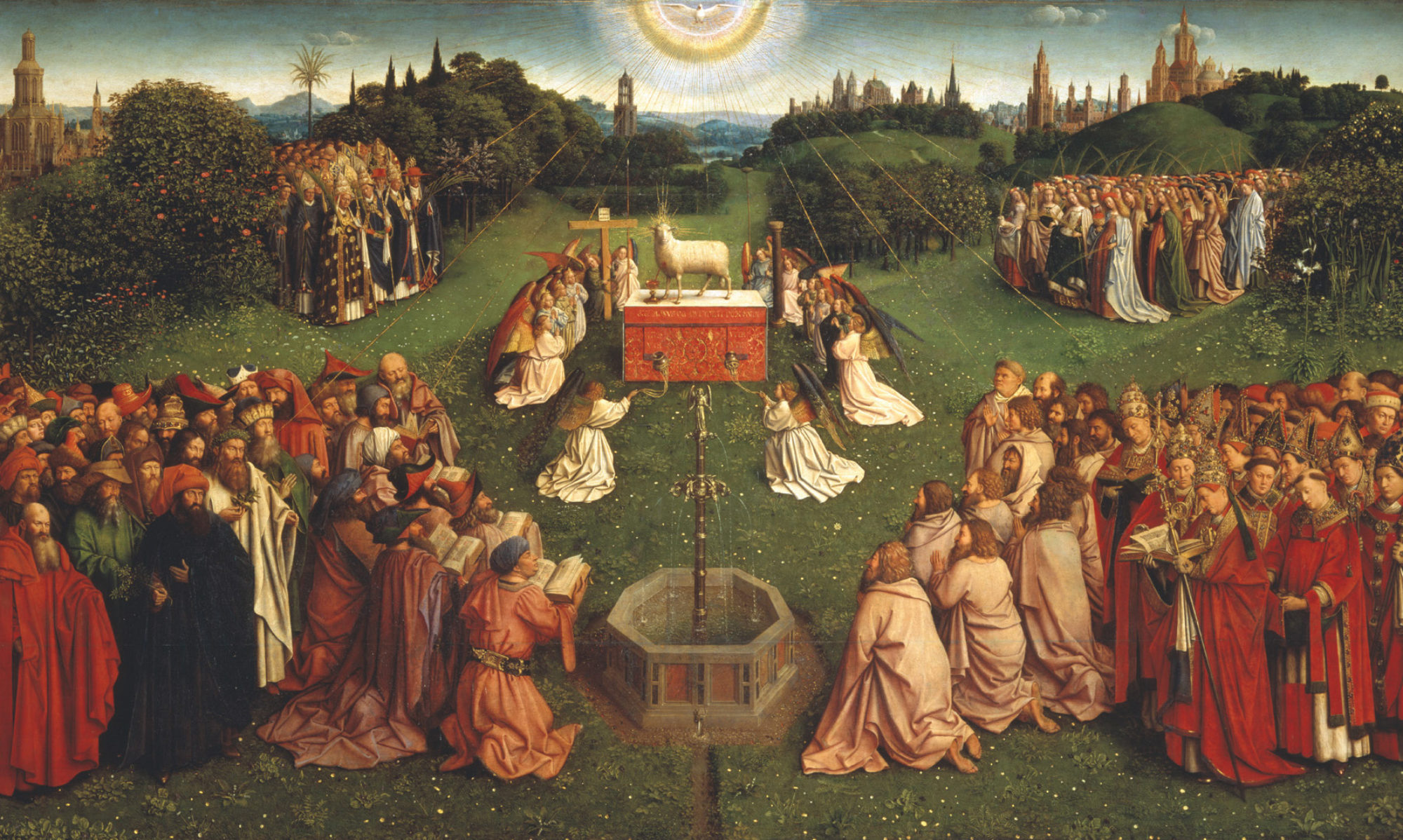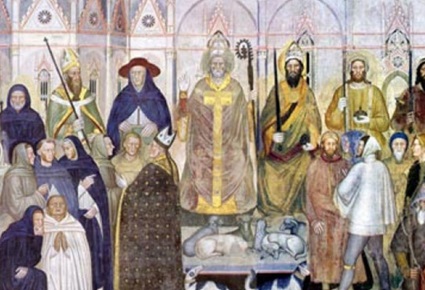In most conventional histories, the Crusades begin in 1095 with the Council of Clermont, at which Pope Urban II—responding to a plea from Byzantine Emperor Alexios II—put forth a general summons to the peoples of the Latin West to assist the Byzantines in freeing the Holy Land. And while this certainly was the event that provided the initial impetus for the First Crusade, it was not the first time a pope had requested military assistance for the Byzantines against the infidels.
The Battle of Manzikert and Gregory VII
In 1071, the Byzantine army under Emperor Romanos IV Diogenes was destroyed by the Seljuk Turks under Alp Arslan at the Battle of Manzikert in eastern Anatolia. The defeat led to a military coup which saw Romanos overthrown and replaced by the Doukas clan, a prominent military family. The upheavals of the coup made it difficult to organize Byzantine resistance to Turkish migrations throughout the region, with the consequence that the Anatolian heartland was lost to the Byzantines forever afterward.
Two years after Manzikert, in 1073, the Chair of St. Peter was taken up by Tuscan monk Hildebrand Sovana, who would become Pope St. Gregory VII, one of the most influential men to ever hold the papacy. With a long service in the Roman Church and extensive diplomatic experience, Gregory was well aware of the various crises demanding his attention and eager to turn his energies toward them. Shorlty after his elevation, Gregory sent a legate to Constantinople to assess the situation in aftermath of Manzikert and the coup of 1071. The identity of the legate is unknown, but he apparently brought back disturbing news of the spread of Seljuk power throughout Anatolia.

Gregory’s Epistle of 1074
Alarmed at what he heard, Pope Gregory penned a circular letter urging the Christians of the west to come to the aid of the Byzantines. The letter appears in the Book I of the Registrum, the official correspondence of Gregory VII, on folio page page 79. We present the letter in its entirety:
Letter to All the Faithful to Defend Constantinople
March 1, 1074
Gregory, to all who are willing to defend the Christian faith, greeting.
We desire to make known to you that the bearer of these presents upon his recent return from beyond the sea visited us at the threshold of the Apostles. From him, as also from many others, we have learned that a people of the pagans [i.e., the Seljuk Turks] have been pressing hard upon the Christian empire, have cruelly laid waste the country almost to the walls of Constantinople and slaughtered like sheep many thousands of Christians. Wherefore, if we love God and acknowledge ourselves to be Christians, we ought to be deeply grieved by the wretched fate of that great empire and the murder of so many followers of Christ.
But it is not enough to grieve over this event; the example of our Redeemer and the duty of brotherly love demand of us that we should set our hearts upon the deliverance of our brethren. For as He offered His life for us, so ought we to offer our lives for our brothers. Be it known, therefore, that we, trusting in the mercy of God and in the might of His power, are preparing in every possible way to carry aid to the Christian empire as soon as may be, by God’s help. We adjure you, by the faith in which you are united [to them] in the adoption of the sons of God, and the authority of St. Peter, prince of the Apostles, to be stirred with compassion by the wounds and blood of your brethren and the peril of the empire and willingly offer to your powerful aid to your brethren in the name of Christ.
Whatever decisions you may make in this matter by God’s mercy, pray report it to us without delay by trustworthy messengers. [1]
Intended Audience
The circumstances surrounding the letter are frustratingly vague. For one thing, its intended audience is uncertain. Its title and introduction suggest it was a circular letter meant for a general audience—”To All the Faithful to Defend Constantinople” and “to all who are willing to defend the Christian faith” strongly imply an intended universal circulation. The introductory sentence, however suggests otherwise. “We desire to make known to you that the bearer of these presents upon his recent return from beyond the sea, etc.” implies that this letter was delivered by a specific courier to a particular individual, someone important enough to recieve “presents” from the papal court. Was the letter meant to be a universal epistle to the Christian faithful or was it written for a more singular audience? Or, perhaps, was it addressed to a specific individual in hopes that he, through his influence, would promulgate it on Gregory’s behalf?
The Canonical Status of the Greeks
While 1054 has become standard date of origin for the Great Schism, historians have long pondered whether what happened in 1054 was perceived as such at the time. Some historians have argued that, canonically speaking, nothing binding or irreformable took place in 1054. [2] Gregory’s letter lends credence to this theory, as he does not seem to regard the Greeks as schismatics. Gregory repeatedly calls them “brothers” and “your brethren in Christ”; elsewhere he goes further, adjuring his readers “by the faith in which you are united [to them] in the adoption of the sons of God.” Since a schismatic cuts himself off from the unity of the Church, it has never been customary to refer to them as “brethren in Christ,” let alone speak of being “united” in the same faith. This all suggests that Gregory VII did not view the Greeks as being in schism, at least as of 1074.
Parallels to the Council of Clermont
The parallels to the 1095 Council of Clermont are obvious. As Pope Urban II would begin his call to arms with a catalogue of Muslim barbarities against Christians, so did Gregory VII relate the danger Christians of the east faced at the hands of the Seljuks. Both Urban and Gregory requested material assistance from the Christians of the west (but whereas Urban explicitly calls for a military campaign, Gregory uses the much vaguer term “powerful aid”). [3] Both popes would frame their request as an exercise in Christian ecumenism. Yet despite these similarities, Urban’s speech launched the First Crusade while this endeavor of Gregory VII never materialized. Why did Gregory’s call to arms fail in 1074 when Urban’s succeeded in 1095?
For one thing, Urban delivered his message at a regional synod in the presence of a great multitude of nobles and commoners, whereas Gregory’s message was solely epistolary. Urban’s speech was thus able to generate a level of popular enthusiasm typically not possible by mere letters. Furthermore, Urban’s call to arms which launched the First Crusade came at the request of the Byzantine Emperor Alexiox Komnenos, whereas there is no evidence of any imperial request to Gregory VII. In addition, Pope Urban II offered a plethora of spiritual benefits to those who took up the cross, Gregory offered no indulgences nor other incentives. Another issue is that, by 1074, Gregory was already grappling with the unfolding conflict with Holy Roman Emperor Henry IV which would consume most of his papacy, and consequently had little time to devote to anything as vast as relieving Constantinople. But the biggest difference is that the Crusaders of 1095 were fired by the enthusiasm for liberating Jerusalem, whereas the evocative image of freeing the sites of Our Lord’s Passion did not factor in Pope Gregory’s letter.
While this is all admittedly hypothetical, it does explain why Pope Gregory’s attempt to launch what we might call a proto-Crusade never materialized. It is fascinating to think, however, that had circumstances been different, the First Crusade could have happened a generation earlier than it did.
[1] The Correspondence of Pope Gregory VII, translated by Ephraim Emerton (W.W. Norton & Co.: New York, 1969) 25-26
[2] For a very basic rundown of these arguments, see “Did Anything Happen in 1054?”, Unam Sanctam Catholicam, February 11, 2008. Available online at https://unamsanctamcatholicam.blogspot.com/2008/02/did-anything-happen-in-1054.html
[3] There are various versions of Urban’s speech at Clermont that have been preserved. An example can be found at https://www.thelatinlibrary.com/imperialism/readings/urban.html, as translated from the Gesta Dei per Francos by Oliver J. Thatcher, and Edgar Holmes McNeal for the 1905 Source Book for Medieval History.
Phillip Campbell, “Gregory VII’s Would-Be Proto-Crusade,” Unam Sanctam Catholicam, February 16, 2025. Available online at https://unamsanctamcatholicam.com/2025/02/gregory-vii-would-be-proto-crusade

